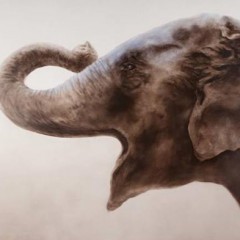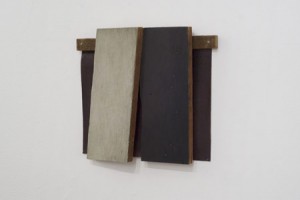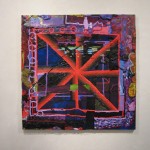In his “Recent Work,” William Smith combines the human study of the natural world through words and diagrams from 18th century books and poetry with his own artistic interpretation of the natural world. Smith picks specific images and words from old books and printed reproductions and integrates them in unusual ways with oil paint and found materials. Smith’s efforts shine through the combination of reductive and additive processes that involve the application of paint, collaged layers of books and found objects, varnishes, and massive amount of etching. Smith creates intricate details of trees, vines, and water reflections. His process yields a content and surface rich in texture with natural woody hues. Smith’s influences – Van Eyck, Hans Memling are reflected his final product, but not his process.
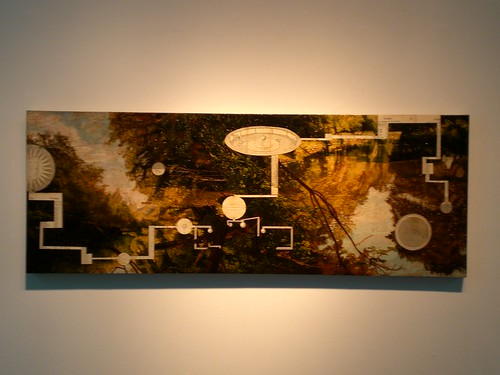
William Smith: Of Eclipses, 2007, oil on book pages from Ferguson’s: Astronomy, printed in 1799, 16″x45.5″
Smith’s work is hung in the main room and the smaller gallery off to the left, with a total of twenty pieces in all, some pieces being unhinged diptychs or triptychs. He does not use horizon lines in almost any of his pieces. Thus, his work can be even more freely interpreted by the viewer, allowing the viewer to choose the angle of perspective they want. Many of the works that he incorporates parts of books with are even more distorted perceptively because of his use of the circle. Some pieces look like they can be hung upside down or horizontally inverted, without appearing as though the image is skewed.
He seems to be very interested in science and the natural world; using the cyclical ideas of the moon, eclipses, and water repeatedly throughout his works. Smith uses the circle, whether representative of moons, eclipses, or the sun and contrasts the unchanging cyclical nature of life with the boisterous, untamed interweaving of trees and vines. Water becomes a method for distorting reality. Smith incorporates rivers and ponds in his work, both in his own painted sections and in pieces of the works that are pulled from books. He uses water to explore reflections through the abstractions of this representational material. Using general art making materials such as paint and coupling that with found objects and pieces of natural science and poetry books, Smith connects how the world functions in its most basic state with how man attempts to understand the world around him. In some ways, Smith seems to be struggling with understanding the natural world and how human beings perceive it and how human beings have and will continue to interact with it. Smith is addressing the duality of human existence in the world where human beings, in some state, exist with and in the natural world, while also combating nature.
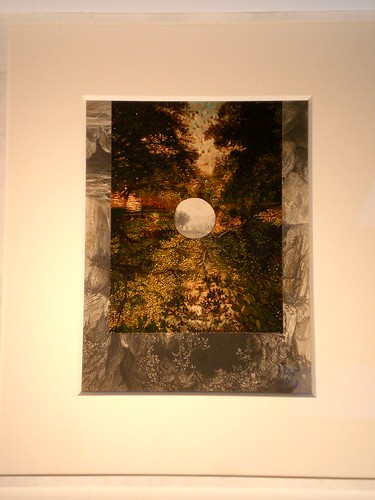
In general, this show is extremely cohesive in theme. However, there are a few pieces that seem to follow Smith’s style, but do not speak to his ideas about nature in the same way as most of his pieces. A small square pastoral scene is one exception. This piece, which seems to be more a painting than collage, does not have any poetry or science book incorporation, nor does he include any water in the piece. There is also a very tiny piece, titled “#1” in the second room of Smith’s show that is composed mainly of tape and oil paint. This piece is intriguing because it looks almost nothing like the rest of the show. Here Smith creates a new composition from left over pieces of tape that were used to shield his book materials from paint in other works. Smith’s work will hang at the Schmidt Dean Gallery at 1710 Sansom Street until May 19th.
— Sarah is a photographer who recently graduated from Saint Joseph’s University.



